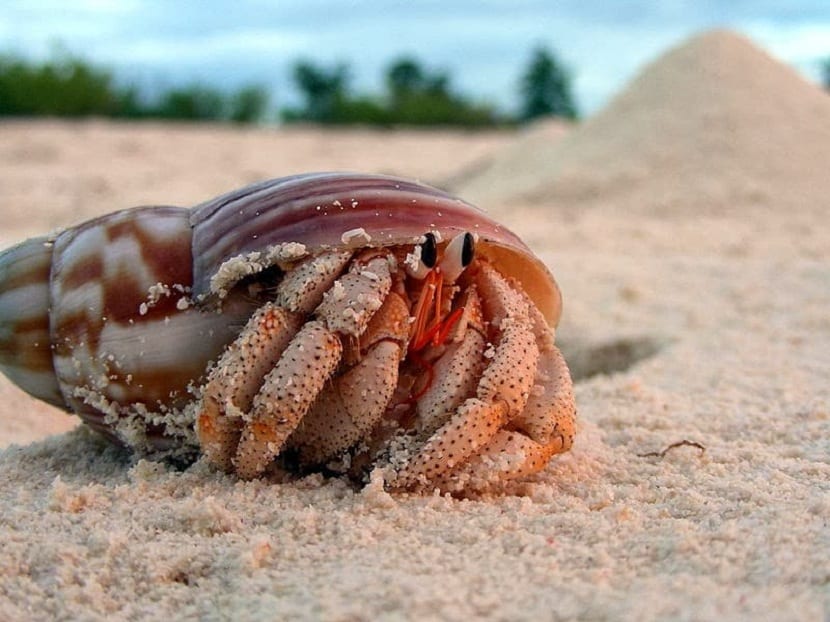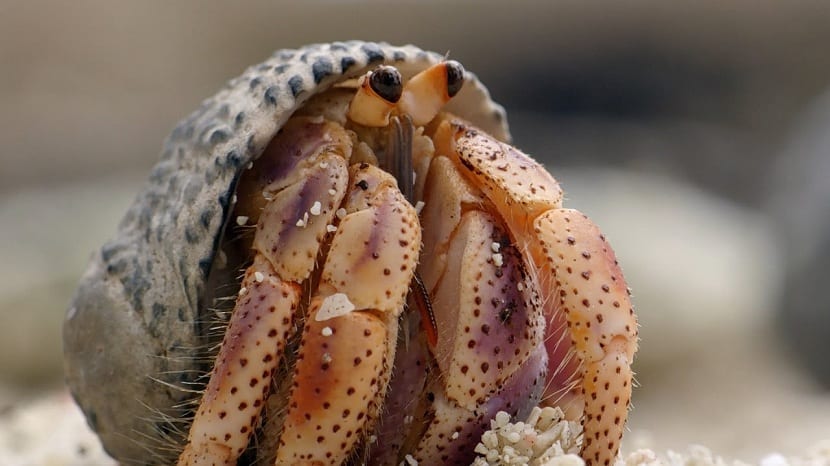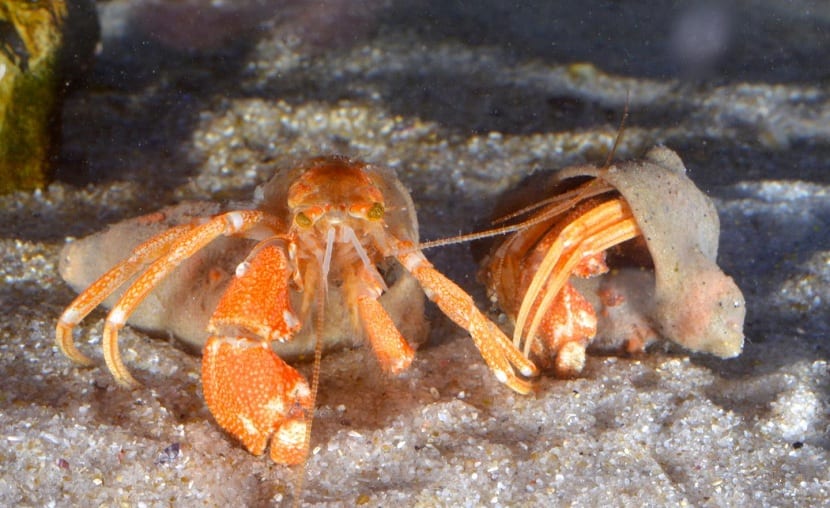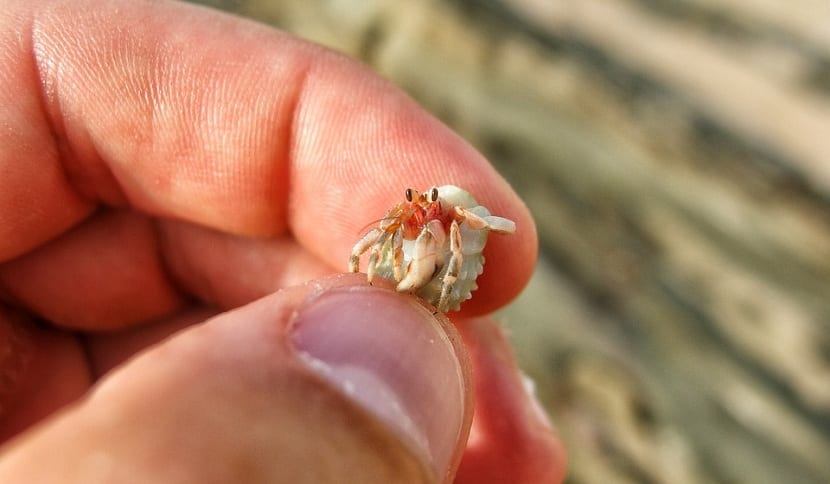
Today we are going to talk about an animal that has the ability to take its home literally wherever it wants. Its about hermit crab. Although they are crabs, they are more related to lobsters than their kind. They do not have a hard shell like the others, but they do have a shell that serves to protect their body. The curious thing about this animal is that, as it grows, they take the empty shell of sea snails to protect themselves. Her life consists of looking for more comfortable houses as she develops and they become too small for her.
In this article we are going to tell you how the hermit crab lives and what its characteristics are.
Key features

The hermit crab is also known as a soldier crab. It is a crustacean that belongs to the decapod family and there are about 500 species of these crabs worldwide. Although most hermit crabs are aquatic, there are also some species that are terrestrial.
Use snail or other mollusk shells to cover the abdomen, as it does not have a shell like other crustaceans. It is softer and therefore more vulnerable to possible predator attacks. It could be said that it is a scavenger species, but it does not feed on the corpse of other animals, but uses the shell to live in it.
You can usually see walking along the seabed, while eating and growing. If there are any dead snails along the way, this animal leaves its old shell to adapt to the new empty shell. This only happens if the new shell has a greater capacity to give you comfort than the old one. If he finds a smaller conch, he will not catch it. This phenomenon of natural adaptation is inhibiting him from evolving and getting his own shell. By always choosing the shell of another animal, you are not developing more armored forms that serve as protection, as different animals of the same species evolved.
Although science has not proven it, you can observe the behavior of a hermit crab when it sees a live snail and knows that its shell can be a potential home. This has been corroborated because examined groups of crabs behind the mollusk waiting for it to die.
Description

It usually has a reddish or brown color. This depends on the environment where they live and how old the crab is. The most normal thing is that they vary between colors orange, bright red, grayish brown, etc. It has 10 legs, among which the first two stand out, which are pliers. The right is larger than the left and both have a rough and grainy textured surface.
The next 4 pairs of legs are used to walk and the rest to hold on and stay inside the shell. It has two structures very similar to antennas that it uses to be able to feel everything around it and make out the environment.
The front part of the crab is what we can see outside the shell. This part is covered by a rigid exoskeleton, while its abdomen and the entire rear part is much softer. This is the reason why we can see the hermit crab twist its abdomen to enter the shell. Here's how you take advantage of protection. When it feels in danger, it uses its legs and pincers so that the attacker cannot enter its shell and attack the weakest part.
Hermit crab diet and habitat

This crab can eat anything. Many people call it a sea vacuum because they can eat almost anything. Its diet is omnivorous and includes mussels, snails, worms, larvae, plants, etc. Also, as its nature to take advantage of dead mollusk shells, it can also feed on dead animals. As with the blue crab It is able to get its own food by filtering all the organic particles that can serve as food.
Regarding its habitat and area of distribution, we find something too wide. And it is that it can be found all over the planet. Since it has an aquatic and somewhat more aquatic-coastal condition, it can live both in the deepest part of the sea and in the reefs, rocky areas of the coast and in the sand on the shore of some beaches. Usually, the deepest it has been seen is about 140 meters.
If they are on land, they prefer to live hidden in the rocks, but they must be very close to the coast to have the water. Regarding its distribution, it can be said that it prefers those areas with a tropical climate. It usually lives in greater abundance in the American and European continents. It's easy to spot one of these crabs if you go from Alaska to Mexico or from Guatemala to Chile.
Hermit crab reproduction

These animals have an oviparous reproduction. That is, they reproduce from eggs. Females usually have two reproductions a year. Their main effect is between the months of January and February, where the hermit population lives on the seashore. Those who live in the depths have been claimed that females are capable of carrying eggs in their womb for up to almost a year.
Once they have copulated, it is the females that carry the eggs under the abdomen for several months. Then he releases them into the sea and it is there that the larvae, with a pelagic lifestyle, remain adrift for a few weeks. Once they have hatched, they emerge in areas called zoes that are part of the plankton.
As they grow, they shed their skin very frequently. Only until you have 4 antennas and 2 clamps is when you will be able to find a shell that allows you to protect the rest of your body. Thanks to this protection they can now leave the beach and begin to develop the adult cap.
I hope this information helps you learn more about the hermit crab.